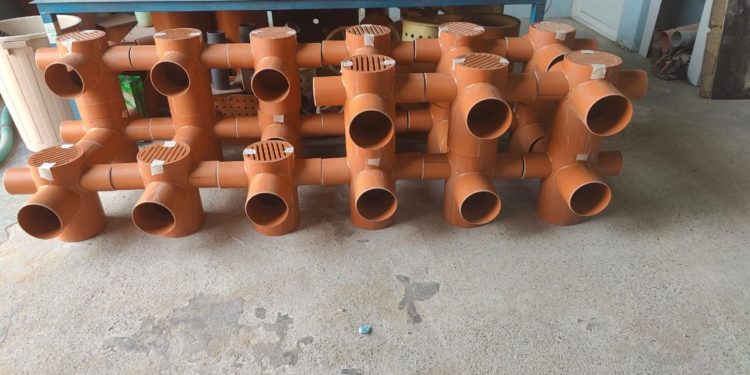A gully trap is a basin-like plumbing installation in the ground which receives piped wastewater from the kitchen, bathroom, and laundry before it is emptied into the sewer. It is sometimes used for rainwater downpipes at ground level before connecting to the stormwater drain. It is an integral part of the drainage system, especially for small household units with no more than two storeys.
A gully trap prevents foul gases from entering the building by providing a water seal. It functions similarly to a bottle trap. It is designed to retain a small quantity of wastewater from the discharge of the fitting to which it is attached, thereby preventing foul odours from entering the building. This seal also prevents bugs and insects from the sewer line from entering wastewater pipes. The water seal typically has a minimum depth of 50mm, and the trap’s diameter should not be smaller than the diameter of the outlet of the fixture to which it is connected.
To further reduce kitchen foul smells, it is essential to ensure that the gully trap is properly maintained. Regular cleaning of the gully trap helps to remove any accumulated debris that might otherwise contribute to odours. Additionally, ensuring that the water seal is maintained by periodically running water through the system can help prevent the seal from drying out and losing its effectiveness.
Proper installation of gully traps also involves ensuring they are positioned correctly. They should be located in areas where they can easily collect wastewater from the kitchen, bathroom, and laundry, and where they can be easily accessed for maintenance.
In summary, using gully traps is an effective method for reducing kitchen foul smells in residential buildings. By maintaining a water seal, they prevent the ingress of foul gases and pests, thereby improving the overall hygiene and comfort of the home. Regular maintenance and proper installation are key to ensuring that gully traps function effectively and continue to provide this essential service.
















